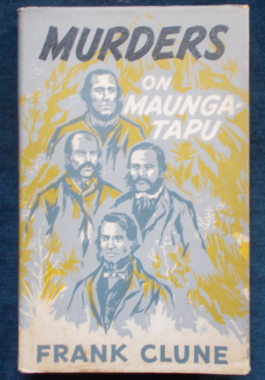-
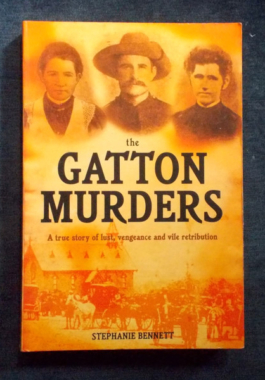 Boxing Day, 1898. Three members of the Murphy family - Michael, Ellen and Norah — are returning to the family farm after a trip in to Gatton, a small town west of Brisbane. On a deserted, moonlit road a few miles out of town they are ambushed. Their horse is killed and the three young people are taken to a remote paddock where the women are brutally raped and bludgeoned to death - and Michael is shot. By the time the police arrived the following day, locals had swarmed all over the crime scene, obliterating the evidence. What followed was a hopelessly bungled investigation and the crime remained unsolved. Fear and mistrust rocked the farming community. Theories about the perpetrator abounded. Was this the work of a sex-crazed tramp? Could a member of the Murphy family have been involved - or was revenge the motive? Stephanie Bennett's detailed examination of this baffling crime after many years spent scouring the available archival material, interviewing relatives of suspects and victims and visiting far flung areas of Queensland brings a new and disturbing theory to the surface that is both chilling and challenging. Queensland's most infamous unsolved murder.
Boxing Day, 1898. Three members of the Murphy family - Michael, Ellen and Norah — are returning to the family farm after a trip in to Gatton, a small town west of Brisbane. On a deserted, moonlit road a few miles out of town they are ambushed. Their horse is killed and the three young people are taken to a remote paddock where the women are brutally raped and bludgeoned to death - and Michael is shot. By the time the police arrived the following day, locals had swarmed all over the crime scene, obliterating the evidence. What followed was a hopelessly bungled investigation and the crime remained unsolved. Fear and mistrust rocked the farming community. Theories about the perpetrator abounded. Was this the work of a sex-crazed tramp? Could a member of the Murphy family have been involved - or was revenge the motive? Stephanie Bennett's detailed examination of this baffling crime after many years spent scouring the available archival material, interviewing relatives of suspects and victims and visiting far flung areas of Queensland brings a new and disturbing theory to the surface that is both chilling and challenging. Queensland's most infamous unsolved murder. -
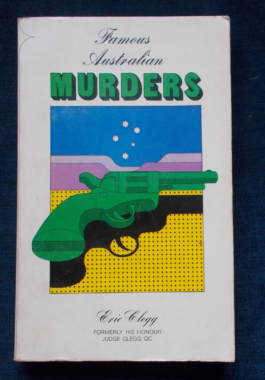 Eric Clegg, formerly His Honour Eric Clegg Q.C. is more than qualified to examine these famous trials and his expert viewpoint reveals many important and often controversial points which arose during the hearings. Cases contained in this volume include: The Kalgoorlie murders of two policemen in 1926, found down a disused mine-shaft; the Passionate Parson, acquitted on a charge of murdering his wife; the Lavers mstyery and the Sundown murders; the Pyjama Girl murder; the fantastic case of T. J. Ley, former Minister for Justice in New South Wales who was eventually convicted for the chalkpit murders and more. Illustrated with black and white photographs.
Eric Clegg, formerly His Honour Eric Clegg Q.C. is more than qualified to examine these famous trials and his expert viewpoint reveals many important and often controversial points which arose during the hearings. Cases contained in this volume include: The Kalgoorlie murders of two policemen in 1926, found down a disused mine-shaft; the Passionate Parson, acquitted on a charge of murdering his wife; the Lavers mstyery and the Sundown murders; the Pyjama Girl murder; the fantastic case of T. J. Ley, former Minister for Justice in New South Wales who was eventually convicted for the chalkpit murders and more. Illustrated with black and white photographs. -
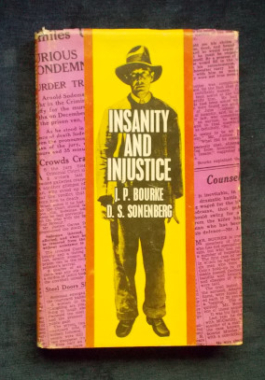 The case of Arnold Karl Soderman is one of the most remarkable in the criminal annals of 20th century Australia. No matter what angle - legal, medical or from the layman's point of view - it presents startling drama and raises challenging questions. The macabre story of the killing of four young children, one only six years old; the tragedy of two men charged with the crimes of which they were guiltless; the situation of a father confronted with an unfounded allegation of the ferocious murder of his daughter; the spectacle of honest witnesses mistakenly testifying as to the identity of an accused man so as to bring the object of their accusations within the shadow of the gallows; the fight for the life of the killer through the hierarchy of the Australian Court System up to the Privy Council; the decision to hang the accused, declared by two government doctor and another highly qualified psychiatrist to have been insane at the time of the killings; and the carrying out of the sentence all combine to make a story which calls for the telling. Co-author J.P. Bourke was Counsel for the Defence in this case 1935-1936
The case of Arnold Karl Soderman is one of the most remarkable in the criminal annals of 20th century Australia. No matter what angle - legal, medical or from the layman's point of view - it presents startling drama and raises challenging questions. The macabre story of the killing of four young children, one only six years old; the tragedy of two men charged with the crimes of which they were guiltless; the situation of a father confronted with an unfounded allegation of the ferocious murder of his daughter; the spectacle of honest witnesses mistakenly testifying as to the identity of an accused man so as to bring the object of their accusations within the shadow of the gallows; the fight for the life of the killer through the hierarchy of the Australian Court System up to the Privy Council; the decision to hang the accused, declared by two government doctor and another highly qualified psychiatrist to have been insane at the time of the killings; and the carrying out of the sentence all combine to make a story which calls for the telling. Co-author J.P. Bourke was Counsel for the Defence in this case 1935-1936 -

Twisted: John Glatt
$85.00When high school sweethearts Karen and Richard Sharpe married, they shared an interest in medicine, a desire for a family and dreams for the future. For Karen, the dream turned into a nightmare. After years of abuse at the hands of her physician husband, she tried to end their 27-year marriage. Fearing a crushing divorce settlement, Richard ended the marriage first by unloading a .22 rifle into Karen's chest. The murder revealed more than Boston society was ready for: Richard Sharpe's compulsive cross-dressing, with a preference for his own daughter's underwear; his taking of hormones to grow breasts, even stealing his wife's birth control pills to help the process. But there was more - much more...Illustrated with black and white photographs.
-
 In 1982, teenager Andrew Tregurtha pleaded guilty to the murder of the Greek Consul-General and a teacher in Sydney's inner city. Six years later he committed suicide at Berrima Gaol. Between the hours of dark and daylight, the lonely hours when prisoners are locked in their cells, Andrew hanged himself. This is his own story. Tregurtha's confession confession begins with the difficulty his family experienced dealing with his undiagnosed hyperactivity and dyslexia, the ensuing confrontations with education authorities and his move to King's Cross as a fifteen year old. Here, unbeknown to his parents, he worked as a male prostitute, eventually falling under the influence of Michael Caldwell, who introduced him to the world of crime in the city. He was sixteen when he was arrested for murder. It is a harrowing tale of life on the edge, of a waif at the Cross, written simply and unglamorously, as he worked towards self-understanding and rehabilitation. Andrew too his own life before publication. Illustrated with black and white photographs.
In 1982, teenager Andrew Tregurtha pleaded guilty to the murder of the Greek Consul-General and a teacher in Sydney's inner city. Six years later he committed suicide at Berrima Gaol. Between the hours of dark and daylight, the lonely hours when prisoners are locked in their cells, Andrew hanged himself. This is his own story. Tregurtha's confession confession begins with the difficulty his family experienced dealing with his undiagnosed hyperactivity and dyslexia, the ensuing confrontations with education authorities and his move to King's Cross as a fifteen year old. Here, unbeknown to his parents, he worked as a male prostitute, eventually falling under the influence of Michael Caldwell, who introduced him to the world of crime in the city. He was sixteen when he was arrested for murder. It is a harrowing tale of life on the edge, of a waif at the Cross, written simply and unglamorously, as he worked towards self-understanding and rehabilitation. Andrew too his own life before publication. Illustrated with black and white photographs. -
 On April 4th, 1968, Dr. Martin Luther King, Jr. stepped out onto the balcony of the Lorraine Motel in Memphis, Tennessee, and into his killer's line of fire. One shot ended Dr. King's life and forever changed the course of American history - setting into motion a massive cover-up that has withstood a quarter-century of scrutiny. Now, after 18 years of intensive investigation, William F. Pepper tears away the veil of subterfuge that has hidden the truth of King's death - proving the innocence of convicted assassin James Earl Rayand revealing the cabal of government leaders and organised crime figures that masterminded the assassination of one of the most influential leaders of our age. The author was an associate of Dr. King and executive director of the independent political coalition that hoped to put King forward as a third party presidential candidate in 1968. After the murder, Pepper walked away from politics. But in 1977. Reverend Ralph Abernathy asked Pepper to interview James Earl Ray. Initially sceptical, Pepper became convinced that Ray was innocent of the crime and that Ray had always claimed, he had been manipulated by a man named Raul and was the victim of a set-up. But who was behind the set-up - and why?
On April 4th, 1968, Dr. Martin Luther King, Jr. stepped out onto the balcony of the Lorraine Motel in Memphis, Tennessee, and into his killer's line of fire. One shot ended Dr. King's life and forever changed the course of American history - setting into motion a massive cover-up that has withstood a quarter-century of scrutiny. Now, after 18 years of intensive investigation, William F. Pepper tears away the veil of subterfuge that has hidden the truth of King's death - proving the innocence of convicted assassin James Earl Rayand revealing the cabal of government leaders and organised crime figures that masterminded the assassination of one of the most influential leaders of our age. The author was an associate of Dr. King and executive director of the independent political coalition that hoped to put King forward as a third party presidential candidate in 1968. After the murder, Pepper walked away from politics. But in 1977. Reverend Ralph Abernathy asked Pepper to interview James Earl Ray. Initially sceptical, Pepper became convinced that Ray was innocent of the crime and that Ray had always claimed, he had been manipulated by a man named Raul and was the victim of a set-up. But who was behind the set-up - and why? -
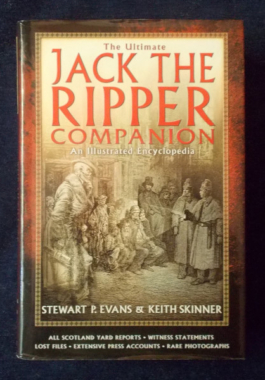 This really is the ultimate for Ripperologists - an encyclopedic work, solidly researched and profusely illustrated, collated from all the known and still-existing official records and supplemented by contemporary press reports. It presents. for the first time in one volume, a prime-source reference book on the eleven shocking prostitute murders that took place in the East End of London between 1888 and 1891. While there is no doubt that the Whitechapel Murders, as they were classified by Scotland Yard, were committed by more than one person, no one knows how many of the killings can be attributed to a single culprit. More than one murderer wore the guise of Jack the Ripper, and the identities of all suspects to this day remain unknown. Divorcing the facts of the Ripper case from the myths that have proliferated in fiction and film, this is a factual, documented narrative of the entire series of crimes, their forensic evidence, the official suspects and possible accomplices, police reports, inquests, newspaper articles of the day and rare photographs.
This really is the ultimate for Ripperologists - an encyclopedic work, solidly researched and profusely illustrated, collated from all the known and still-existing official records and supplemented by contemporary press reports. It presents. for the first time in one volume, a prime-source reference book on the eleven shocking prostitute murders that took place in the East End of London between 1888 and 1891. While there is no doubt that the Whitechapel Murders, as they were classified by Scotland Yard, were committed by more than one person, no one knows how many of the killings can be attributed to a single culprit. More than one murderer wore the guise of Jack the Ripper, and the identities of all suspects to this day remain unknown. Divorcing the facts of the Ripper case from the myths that have proliferated in fiction and film, this is a factual, documented narrative of the entire series of crimes, their forensic evidence, the official suspects and possible accomplices, police reports, inquests, newspaper articles of the day and rare photographs. -
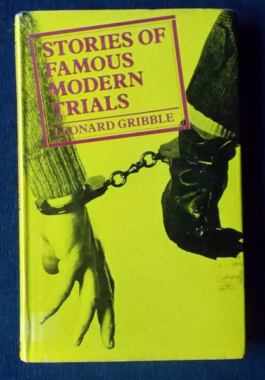 With such intriguing chapters as: The Riddle of the Bordereau (the Dreyfus case); Murder in High Society (the murder of Stanford White and the affair of Evelyn Stanford nee Nesbit and Harry Thaw) ; the Tragedy of Oscar Slater (the murder of Marion Gilchrist); The Original Winslow Boy (the tragedy caused by the theft of a five shilling postal order); A Matter of High Treason (Roger Casement); The Green Bicycle Mystery (the murder of Bella Wright) ; Buccaneer in Morning Coat (Horatio Bottomley, swindler par excellence) ; The Incredible Fire Raisers (the Leopold Harris arson gang) ; Justice Comes To Nuremburg; The Double Betrayal (the case of Klaus Fuchs); Teenagers On A Roof (the thrill-killing of a police man in London, 1952) ; The Great Train Robbers.
With such intriguing chapters as: The Riddle of the Bordereau (the Dreyfus case); Murder in High Society (the murder of Stanford White and the affair of Evelyn Stanford nee Nesbit and Harry Thaw) ; the Tragedy of Oscar Slater (the murder of Marion Gilchrist); The Original Winslow Boy (the tragedy caused by the theft of a five shilling postal order); A Matter of High Treason (Roger Casement); The Green Bicycle Mystery (the murder of Bella Wright) ; Buccaneer in Morning Coat (Horatio Bottomley, swindler par excellence) ; The Incredible Fire Raisers (the Leopold Harris arson gang) ; Justice Comes To Nuremburg; The Double Betrayal (the case of Klaus Fuchs); Teenagers On A Roof (the thrill-killing of a police man in London, 1952) ; The Great Train Robbers.




